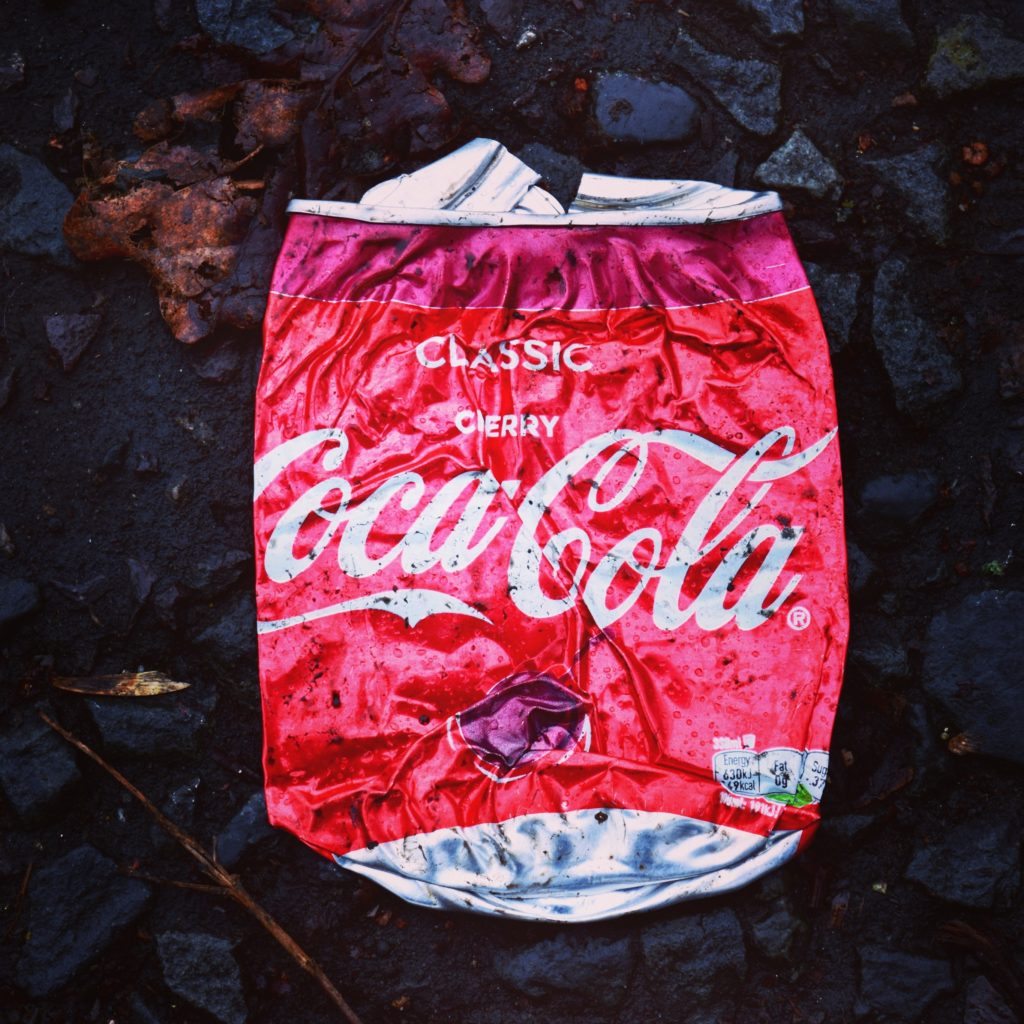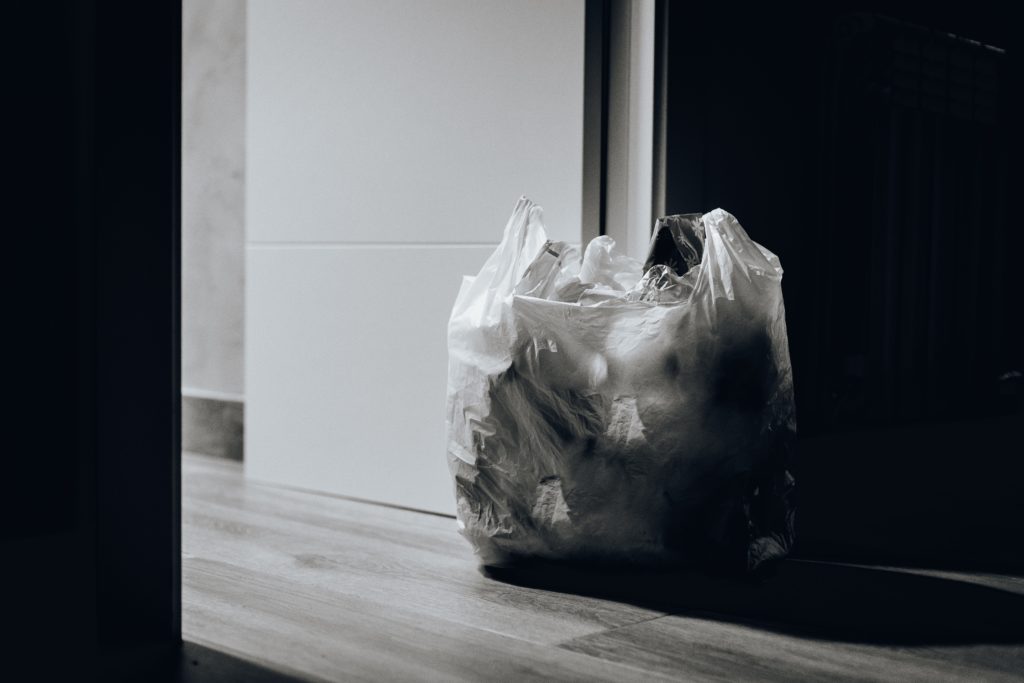End Plastics
Confessions of an aspirational recycler
August 21, 2019
I’ve got a dirty secret. Despite working for nearly a decade now on climate and the environment, I am a self-identified (recovering!) aspirational recycler. Since I was old enough to reach the recycling bin, I’ve thrown in any and every conceivably recyclable material, thanking these bottles, boxes and bags for their service and wishing them all the very best on their magical journey to reincarnation.
Milk cartons? Yep. Pizza boxes? Almost every Sunday. Plastic grocery bags? Sure. Plastics #1 to infinity? If it bore the happy triangle of arrows, it went in, destined for an exciting new life as I went about my own. I can tell you now — I was blissfully unaware, and perhaps even a little bit smug, about the great things I was doing for my planet.
So you can imagine my confusion and horror when I first read about a new phenomenon called “aspirational recycling,” also known as “wishful recycling” or “wishcycling.” This insidious phenomenon convinces well-meaning people like me that recycling is a blanket solution to our single-use plastics addiction.
You know that phrase, “Ignorance is bliss?” That’s wishcycling.
But here’s the problem: Recycling is, at best, a Band-aid solution to our consumption and waste-management challenges. And that’s if it’s done correctly.
American recycling: A brief history
When recycling first appeared about fifty years ago, it was a very different beast: American recycling systems in the 1970s, like in many countries today, were dual stream. You had to separate your glass, paper, plastic and metals. It was more painstaking, for sure, but it was also more precise.
Today, the luxury of single-stream recycling means you can toss all your materials — cans and jars and paper, oh my! — into one bin, shut the lid and thank the recycling powers that be for a swift and painless (dare I say, mindless) process.
But therein lies the rub. By simplifying our recycling processes, consumers like me have been given significant power. And with that power, it’s our responsibility to do our homework on what is recyclable. Because recycling badly is worse than just throwing waste right into the trash.
Contamination station
Between 2005 and 2014, single-stream recycling exploded, expanding from 29 percent of American communities to 80 percent. In a 2018 article, Vice President of Recycling Operations for Waste Management Brent Bell explains that with the convenience of single-stream, “recycling rates soared to their highest levels.” Households recycled more, and plants processed millions of tons more recyclable materials.
Bell refers to this period as the “boom years” of recycling. But with boom comes bust: While convenient, single-stream recycling correlates strongly with rising contamination rates.
Contamination happens when non-recyclable items are mixed with recyclables, or when otherwise recyclable items are polluted by things like grease, food, dirt or glass shards. A decade ago, contamination rates for American recyclables ran about 7 percent. Today, about 25 percent of all items in the recycling bin are not recyclable through curbside programs. So what happens to those items?
A one-way ticket to the trash heap
Historically, America’s recycling has gone straight to China, which for decades has imported our recyclables with few questions asked. In July 2017, however, China announced a ban on plastic imports of anything with more than half a percent of contamination. The ban took effect just five months later, leaving American recycling companies scrambling, and American recyclers (myself included) with bad recycling habits to undo.
Contamination takes many forms: the blissfully ignorant (wishcycled materials like potato chip bags and plastic cling film), the lazy (containers that are still greasy, wet or covered in food) and the bizarre. According to Helen Lee, environmental program manager for the Department of Transportation & Environmental Services for Alexandria, Virginia, some of the city’s most common recycling contaminants are dirty diapers, garden hoses, clothes and bowling balls.
You read that right: dirty diapers and bowling balls. Someone has been taking wishcycling to a whole new level.

You’re doing it wrong: Recycling edition
So just what can’t you recycle? Well, let’s start with the low-hanging fruit: Diapers (dirty or clean) cannot be recycled, nor can your bowling ball. Take bowling balls to one of your city’s charitable donation centers, together with the garden hoses and clothes (even in poor or ripped condition, textiles can often be saved from the landfills and recycled through citywide donation bins like Planet Aid).
And what about the more, ahem, traditionally wishcycled materials? Plastic grocery bags are big offender, as are plastic films and plastic wraps. These plastics are really polyethylene film, which includes high-density polyethylene (also known as HDPE or #2 plastic) and low-density polyethylene (also known as LDPE or #4 plastic).
Polyethylene wreaks havoc on recycling processing equipment, getting caught in machines and slowing the recycling process. The good news? Most larger grocery stories and retail chains now collect these so-called “soft plastics” and ship them to proper recycling facilities.
A good rule of thumb (or finger) for identifying soft plastics comes from Recyclebank: If the plastic material can be wrapped around your finger, it doesn’t belong in the recycle bin.

Of course, if you can avoid using plastic grocery bags in the first place, all the better. Tuck a reusable grocery bag in your purse, backpack or desk for your next grocery story run, and skip the headache.
Wide-eyed optimism aside, some items just can’t be recycled curbside. Your mileage may vary depending on your local recycling facilities, but here are some of the items that can’t be recycled in this neck of the woods (Washington, D.C.):
- Potato chip bags
- Plastic straws, stirrers and utensils
- Anything foam, including cups and those pesky packing peanuts
For other items — glass jars, bottles, cans — just keep it clean, guys! In many parts of the U.S., grease won’t cut it. So if you’re hellbent on recycling that pizza box, at least rip off the greasy half and trash or compost it, recycling the dry cardboard. Also, don’t toss your half-empty beer bottle in the recycling bin: Not only are you wasting good beer; you may be dousing otherwise perfectly good recyclable cardboard and paper, rendering it useless for recycling.
In sum, rinse your bottles, jars and cans, then toss them in. Empty containers, full hearts!
Reduce your recycling
Even more, let’s make the case for less recycling in the first place: At best, recycling is an imperfect system. At worst, it’s a long, winding, resource-intensive trip to the landfill.
In the face of our single-use culture, I’m calling for reducing and reusing first. If you must recycle, do your homework and recycle what you can, then swallow your pride and trash what you must.
Blissful ignorance ends here. But if we do it right, at least it doesn’t end up in a landfill.

